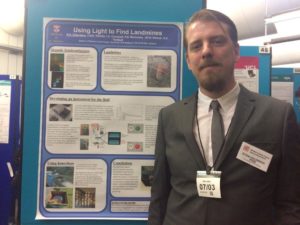Explosives detection

An optical sensor platform for the detection of explosive remnants of war
In-field prototype optimisation and end-user engagement
Dr Ross Gillanders &
Prof. Graham Turnbull | Organic Semiconductor Centre,
School of Physics & Astronomy
Since legacy landmines affect local populations beyond the obvious dangers, there is worldwide interest in advanced Explosive Remnants of War (ERW)-detecting technology. Many countries are affected by mines dating from World War I to current conflicts.
Mined areas can inhibit
- farming
- trade &
- communication between local communities.
The Ottawa Convention, seeking to ban land mines completely, has 136 countries as signatories. However, humanitarian demining is typically a time-consuming and expensive process.
Cutting-edge technologies can help improve these issues.
At the Organic Semiconductor Centre, we have developed thin polymer films that emit light. When the films come into contact with explosive vapour this light dims. By exploiting this phenomenon, we were able to develop, during the Tiramisu FP7 project, a portable system to transport the technology from the lab to the field. However, trace vapour sampling in the field is a huge challenge.
The work funded by the EPSRC Impact Acceleration Award grant is improving our previously developed prototype to make it truly suitable for deployment in mine-afflicted areas by introducing a “pre-concentration” stage to increase the level of explosive vapours exposed to the sensor. Having a fast-responding, lightweight, inexpensive sensor system could significantly impact deminers’ toolkits and methods, and so significantly help clearance efforts.

